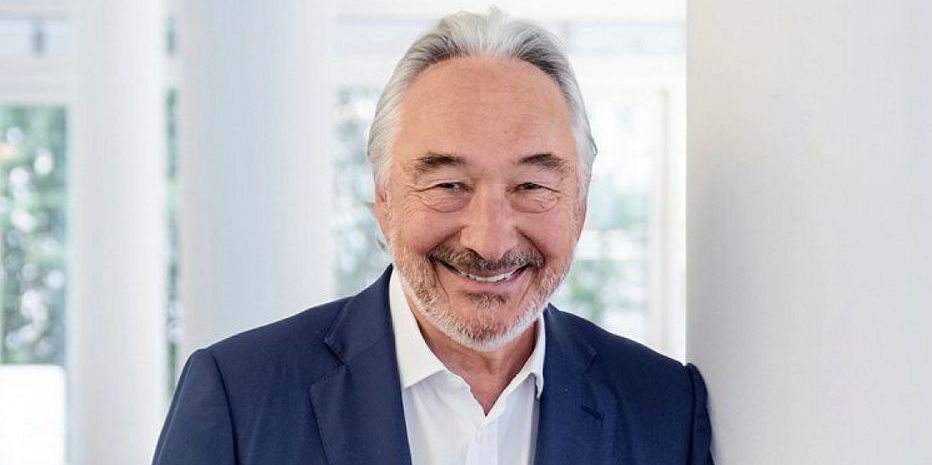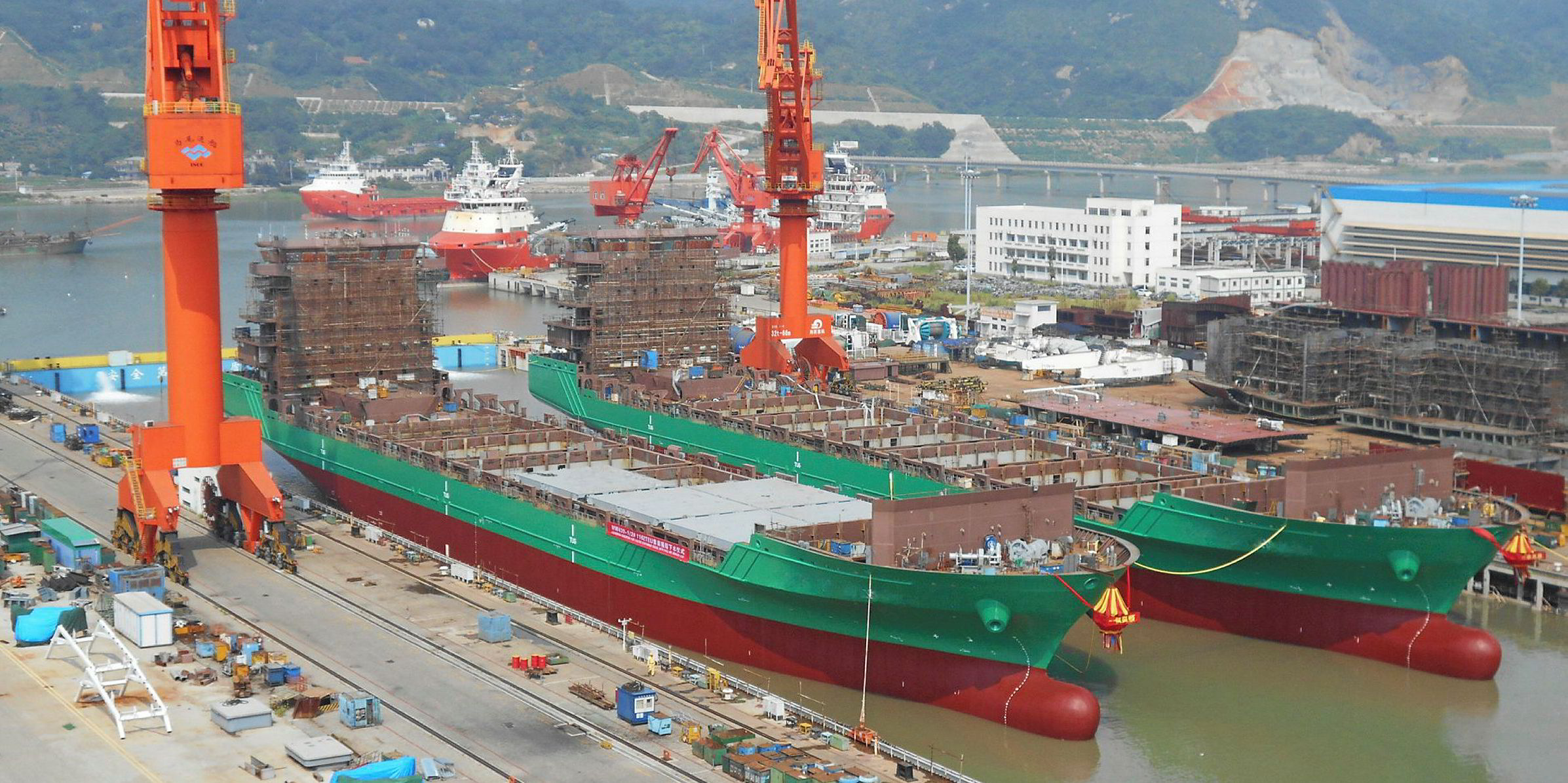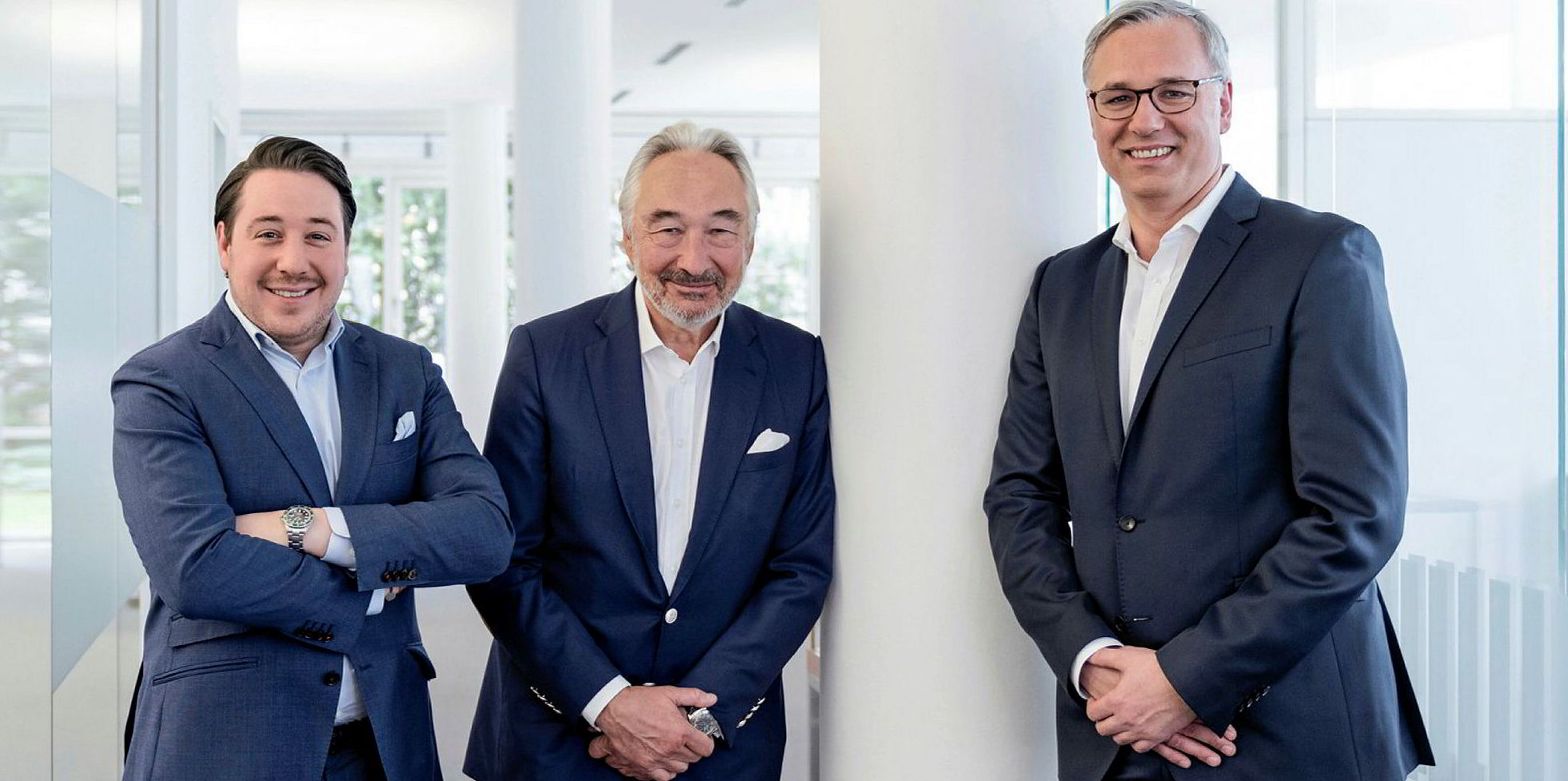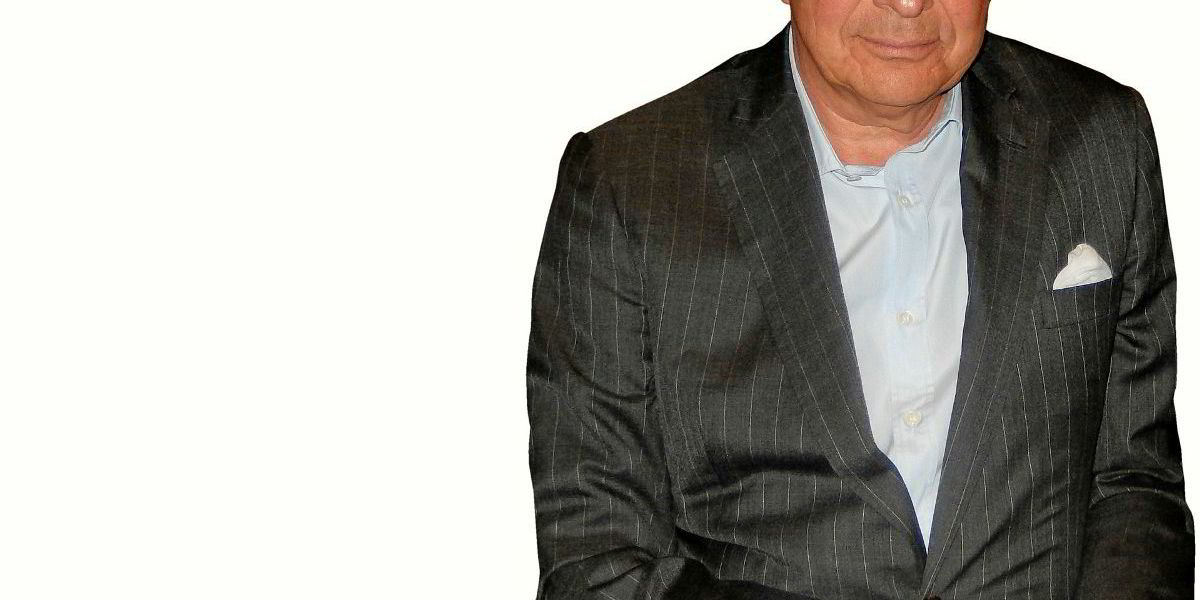Several times throughout their history, the Rickmers family have had to make a fresh start in shipping.
Wars, insolvencies and other misfortunes have meant they have at times been forced to build up their operation from scratch over the past 185 years.
Now the family patriarch, Bertram RC Rickmers, has teamed up with his son, Rickmer Clasen Rickmers, to do so again. Only this time, the hope is it will be much easier.
Bertram Rickmers, now 66, entered the business in the early 1980s when there was “absolutely nothing left”. The family shipyard had filed for insolvency and the liner service had been sold.
“I inherited nothing. Zero. We had to start again,” he says.
Within a few years, he had bought back Rickmers-Linie from Hapag-Lloyd and built up a fleet of more than 100 ships.
But in June 2017 the mainstay of his shipping operations went belly-up again. Rickmers Holding filed for insolvency with €700m ($810m) of debt on a fleet of mainly KG-owned (limited partnership) vessels.
That was a body blow to the empire, but not a killer one.
“The insolvency of Rickmers Holding was a substantial shadow over my life,” Rickmers admits. “But I was not personally liable. And even at that time, it was not any more the main part of our business activities.”
Diversification meant Rickmers Holding accounted for less than one-quarter of the business.
Most of the family’s investments were pooled in Brick Holding, the family holding company of which Rickmers is executive chairman. It lumps together investments in shipping, real estate and offshore interests.

The insolvency means another start in shipping.
“We are used to it. But this time it’s easier. Because we are quite strong and we have resources. And we can do these new activities without partners.”
Rickmers has passed the baton to his 30-year-old son, the sixth generation of the family to join the shipping business. Clasen’s two elder sisters are shareholders but are not involved in the management.
Clasen previously worked for seven years in Asia as a shipbroker with Navis Chartering in Singapore, as well as in shipmanagement with Bengal Tiger Line.
He returned to Hamburg this year to take up the position as managing partner of the Asian Spirit Steamship Co (ASSC), which is marketing a new design of modern containership.
If you run a large fleet and you have a responsibility, never be personally liable
Bertram Rickmers
“For me it was a great opportunity to come back to Europe. And as my father wanted me to come into the family business, it was the right time,” Clasen tells TW+.
“He told me that we have heavy fuel oil in the veins. And I never wanted to do anything else than shipping.”
Clasen is under no illusions that his father will remain involved in big decisions. But the consensus is that he will let Clasen run the company without too much direct involvement.
“I think you should let the next generation make and learn from their own mistakes,” Rickmers Sr says. “You can’t tell a baby that fire hurts, you have to let them test it.”
ASSC is betting on being able to get a new feeder containership design to catch on.
After studying the segment for a long time, Clasen says, “We came up with the idea that the market needs something different.”
He believes traditional feeder designs, such as the CV1100, are increasingly outdated in a sector in which the average age is 15 years. So the family has embarked on a project to provide the most modern and eco-friendly feeder boxships.
“We have spoken to hundreds of charterers and asked, ‘What do you need for 1,100-teu ships?’ ” Clasen says. Those inputs led to their Eco16 design.
ASSC has committed to taking eight in a series of 10 ships on order at Fujian Mawei Shipbuilding for delivery in the coming weeks and through next year into 2021. The other two in the series have been taken by MTT Shipping.
Bertram Rickmers is reluctant to use the BengalMax tag that has been applied to the design. He feels the label limits the vessel to a specific trading range.
He prefers Eco16, reflecting their 16,000 dwt, which is generally associated with larger containerships. The newer designs are closer in terms of cargo intake to conventional 1,700-teu ships than older 1,100-teu vessels.
The “ultimate goal” is to increase the fleet to up to 40 vessels, says ASSC and Brick Holding managing director Ulrik Kriete. “We don’t want to have these vessels as a unicorn. We want a series of vessels so that it [the design] is more visible to the market.”
The existing fleet is fully financed with equity and bareboat leases from Chinese lessors.
And Bertram Rickmers believes financing is available to acquire more ships: “If our concept proves to be good, I am pretty sure we will find investors that want to join us. We are trying to do something new. If you want to be innovative, you cannot buy existing tonnage.”

Clasen adds: “You have to have a difference to the existing fleet, otherwise you are just another fish in the water.”
There is an advantage having his father as the patron of the new shipping business. As Kriete notes: “He has a fantastic network, so the name still opens doors.”
Some of the advice being handed from father to son is likely to be shaped by Bertram Rickmers’ experience with German shipping banks. He believes they adopted a harder line with Rickmers Holding than with the country’s other shipping companies.
Rickmers Holding was forced to file for insolvency in 2017 after HSH Nordbank rejected a restructuring plan.
“It was very much to our surprise. Nobody expected it. All the lights were on green, not on yellow or red,” Rickmers says.
Several other large German shipping companies were being given write-downs amounting to hundreds of millions of dollars. But Rickmers Holding had issued bonds, which meant the cost of its restructuring programme had to be made public.
Bertram Rickmers implies that it may have been expedient to blame shipowners for the billions of losses made by the German banks. “We believe they [the banks] needed a prominent victim.”
“At the end, it was the transparency,” Kriete says. “And that made Rickmers the victim.”
The insolvency scuppered plans to raise funds from the equity market. With the stocks of shipping companies trading below net asset values, there are no plans to review those ideas.
But it may be something to come back to if “we want to grow, substantially grow”, Rickmers says. “At the moment the market is not there. But we have time. We don’t need to do something tomorrow. All our ships are financed. We deliver the equity from family sources.”
The experience with the banks has taught Rickmers that “if you run a large fleet and you have a responsibility, never be personally liable”. Or, as Kriete puts it: “Have skin in the game, but not unlimited liability.”
Rickmers points to huge changes taking place, including the consolidation of liner operators into a handful of giant companies.
“If you want to be a player, you have to concentrate on ‘the gorillas’,” although “they might need you on the small ships, but they will not need you in the longer terms on the larger ships.
“They can do their own models with Chinese or Japanese leasing schemes. That is a model which is competing with traditional shipowners.”
Rickmers acknowledges that he is much more conservative than in the past. “Today we would never build a 5,000-6,000-teu ship on spec. So we concentrate on small ships, on feeder tonnage, where the big gorillas might not necessarily invest themselves.”
High hopes for ‘sweet 16’ vessels

Asian Spirit Steamship Co (ASSC) opted to equip its eight Eco16 feeder boxship newbuildings with hybrid scrubbers at a very early stage.
Rickmer Clasen Rickmers says: “We took the decision in 2016 when we signed the newbuilding contract. At that time, many people said, ‘You guys are crazy. You fit a scrubber on a 1,100-teu ship? It’s 2020 — you don’t know what’s going to happen’.”
But he says the first two ships have been fixed for two years to a major liner company at around twice the spot market rate. He won’t name the charterer, but market sources say it is Mediterranean Shipping Co. Clasen comments: “Other charterers will see that a good name in the industry has taken the first two ships, which makes it more interesting for smaller charterers.”
At about $21m each, the ships are not cheap, but there are plans to expand the fleet. “There are more to come,” he says, and if successful, the design could be extended to 1,800-teu and 2,700-teu ships.
One possible avenue for expansion is a project called 2020Seaways, which ASSC might use as a platform for investment. The name is a nod to the fundamental changes emerging next year with new fuel sulphur limits.
“We want to show with this name that there is a certain strategy behind our core activities,” Ulrik Kriete says. “That we want to deliver the most modern tonnage you can get in the feeder segment between 1,000 and 3,000 teu.”
Bertram Rickmers believes the figures speak for themselves. The Eco16s’ cargo intake is closer to that of a 1,700-teu ship, with 935 teu of containers loaded at 14 tons, and their shallow six-metre draft enables them to carry 50% more than other ships into the port of Kolkata.
But he argues that the fuel cost savings alone pay for the charter rate premium. The Eco16s consume less than 20 tonnes of fuel per day, while older feederships need 30 tonnes, equating to daily savings of $4,000 at today’s prices.
And if the price of heavy fuel oil falls further ahead of IMO 2020, the savings will be much higher. “Then our charter rate is ... far too low,” Rickmers says.
ASSC will also retrofit scrubbers on at least one older vessel this year. An open-loop scrubber will be added to the 4,250-teu Spirit of Lisbon (built 2010), with Maersk agreeing a longer charter and shared “bunker premium”. Ian Lewis






